Wiggin’ Out
Litchfield Hills Audubon Society’s Wigwam Brook Wildlife Sanctuary, Litchfield
Novembers 2017 & 2020
The town of Litchfield has always been interesting to me. Everyone is familiar with its fancy dan “downtown” area; with its restaurants and high-end shopping. But outside of that strip through the center of town, Litchfield gets a little weird. And I mean that in a good way.
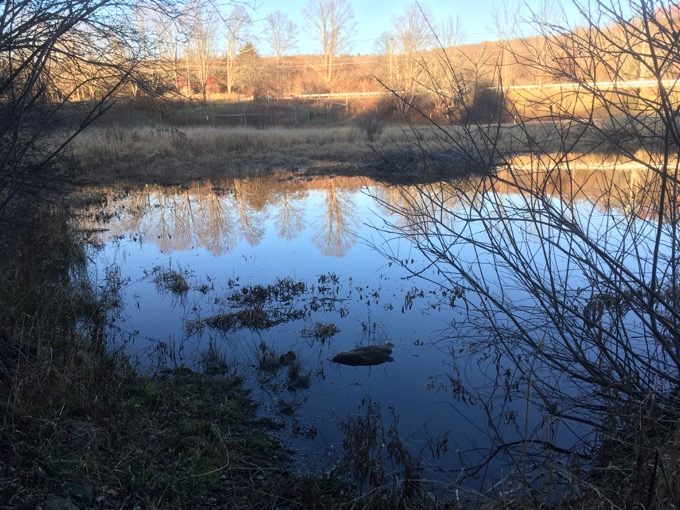
There are a lot of unique little places around town, and I’ve had fun over the years exploring them.
I can’t pretend a walk around the Litchfield Hills Audubon Society’s Wigwam Brook Wildlife Sanctuary is on par with some of the other stuff hidden around town, but it is interesting nonetheless. There are two loop trails here, which I hiked three years apart.

![]()
Conifer Loop Trail, 2017
Damian and I checked this trail out while waiting for our Thanksgiving turkey farm to open. That’s right, I drive out to northwest Litchfield to Bunnell Farm for our fancy dan turkey. Only the best for my family.
Imagine my surprise to find another car in the parking lot on a Tuesday afternoon in the middle of nowhere, Litchfield. The trail here is a “square loop” on a hillside.

But lo, this isn’t just any old hillside. The folks who maintain it wax positively poetic about it:
Wigwam Brook Wildlife Sanctuary, located along Connecticut’s scenic Route 254 in Litchfield, is a landscape that has seen many changes over the years, some man-made and others by nature. Mowed fields and stone walls show evidence of former farmland, and an overgrown Christmas tree plantation, (now a haven for many birds) demonstrate another agricultural practice. Wigwam Brook, the sanctuary’s namesake, tranquilly flows the length of the property, ponding up now and then along the way, thanks to industrious beavers.

The 36 acre property was acquired in 2008 and Litchfield Hills Audubon Society has been devoted to preserving existing habitats, and enhancing others to attract threatened wildlife species. Change continues as volunteers plant trees and shrubs for wildlife. Two American Chestnut orchards, totaling 2 acres, have been planted and managed to help restore this magnificent tree to its former grandeur.
That’s right, the hillside is home to one of Connecticut’s rare chestnut orchards. It is protected by a high fence. The fencing is to fend off deer, but it is quite imposing to humans as well.
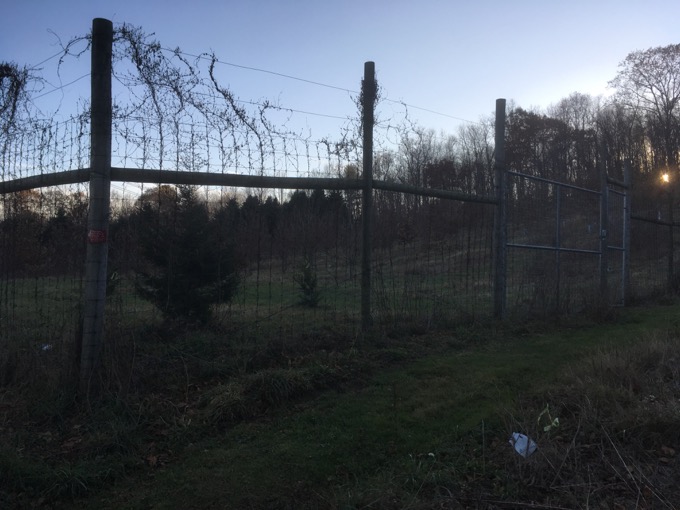
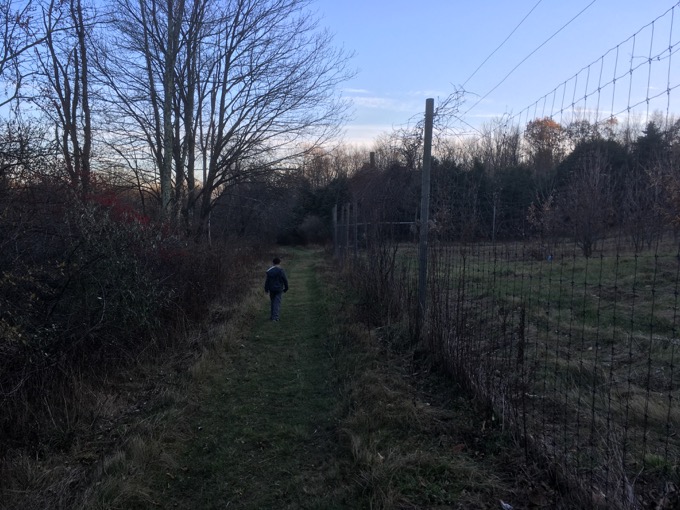
There are informational signs at the trailhead about the chestnut program in the US; all about the blight that killed off the trees over the course of the 20th century. An estimated 4 billion with a b chestnuts were killed, wiping out about 200 million acres. It is often cited as one of the greatest ecological disasters of the 20th century.
The 21st century is a whole other story.
Enterprising ecologists have been trying to reintroduce blight resistant chestnuts up and down the east coast and the LHAS has partnered with the American Chestnut Foundation to get a grove going in Litchfield. It’s a tricky thing, because chestnut trees can grow for years, up to 30-feet high, and look fantastic and then, boom.
Blight.
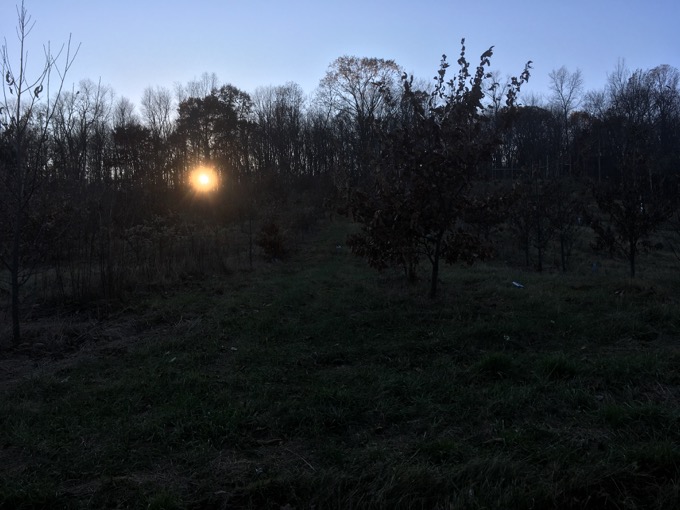
We saw the other car’s owner down near the beaver pond doing what people are supposed to do in Audubon properties: birding. They seemed just as startled to see me and Damian bumbling about.
Wigwam Brook is a nice little property and I hope their chestnut program works out. I haven’t kept tabs on how the other experimental orchards around the state are doing (I know there’s one near Sleeping Giant), but I wish them the best of luck.
Even if “chestnuts roasting on an open fire” is one of the worst smells I can think of.
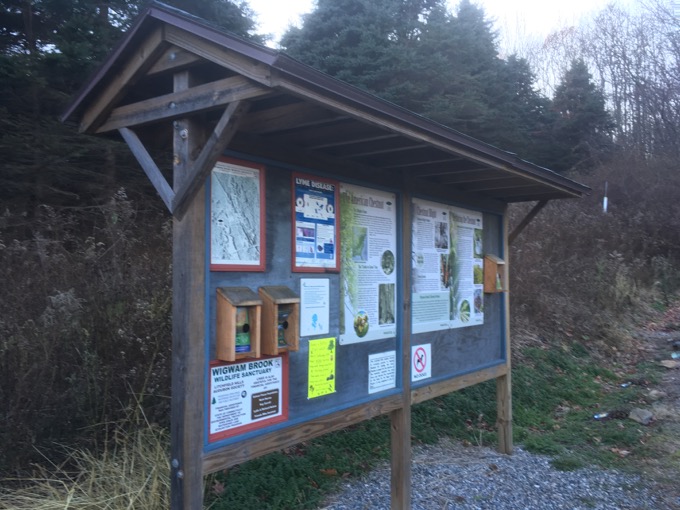
![]()
Bones & Bottles Trail, 2020
If you see in the comments section below, my hiking friend Richard alerted me to a new trail cleared and blazed here after my 2017 visit with Damian. It really is called the Bones & Bottles Trail, and it provides a longer loop option than the Conifer Loop.
I used the same little parking lot and crossed Lipeika Road, hopped over a stone wall, and hit the trail. Once again, I was tackling this in the fading light of late November on my way to pick up our Thanksgiving Turkey in Litchfield. It’s become a delicious annual tradition.
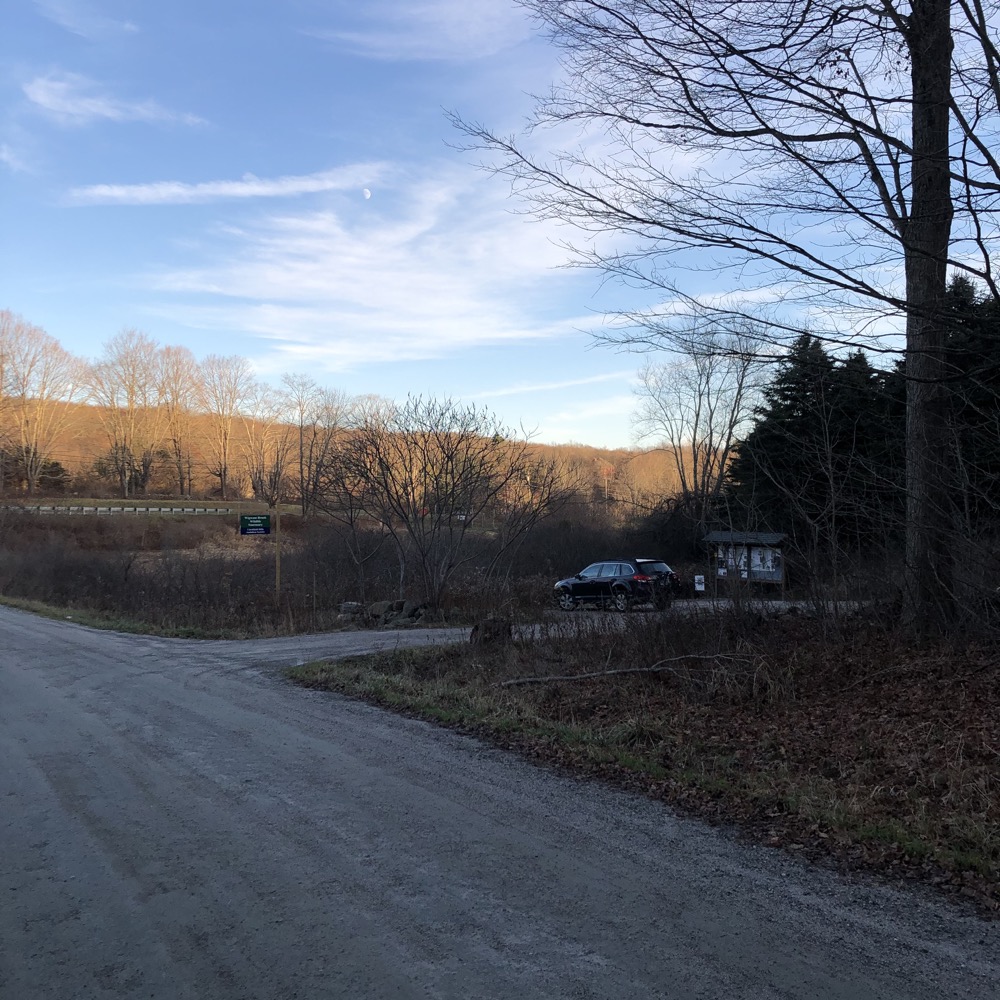
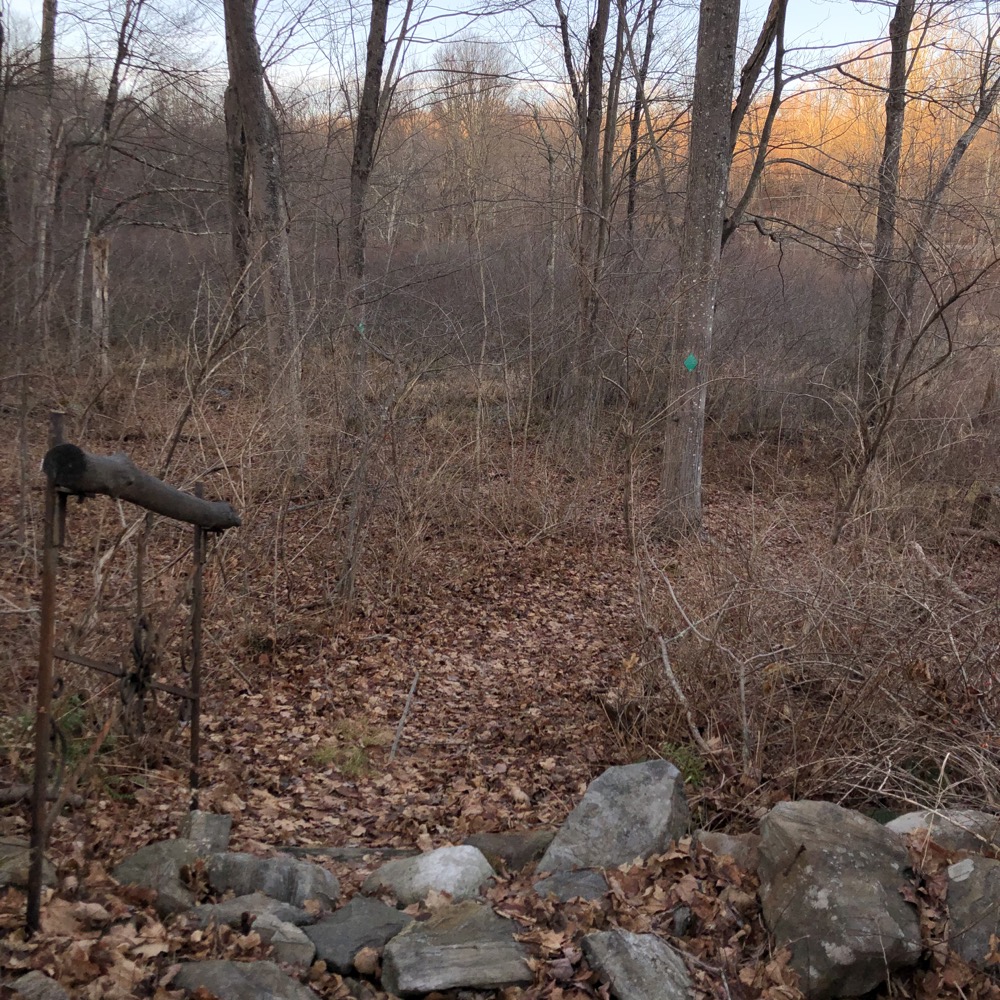
I didn’t know what to expect, but knew that the trail parallels Route 254. It began on… I don’t know? Old Route 254? Yes, buried under leaves and dirt was an old asphalt road. Even the painted lines were still visible.
Perhaps those are the “bones” in the trail’s name? As in the “old bones of old Route 254?” I have no idea, but I didn’t happen across any piles of bones or skeletons or anything. And believe me, I was looking. If only for a better story to tell here.
I mean, it’s not like I was going to find any bottles either. Why would they name a trail after litter? That would just be ridicu-
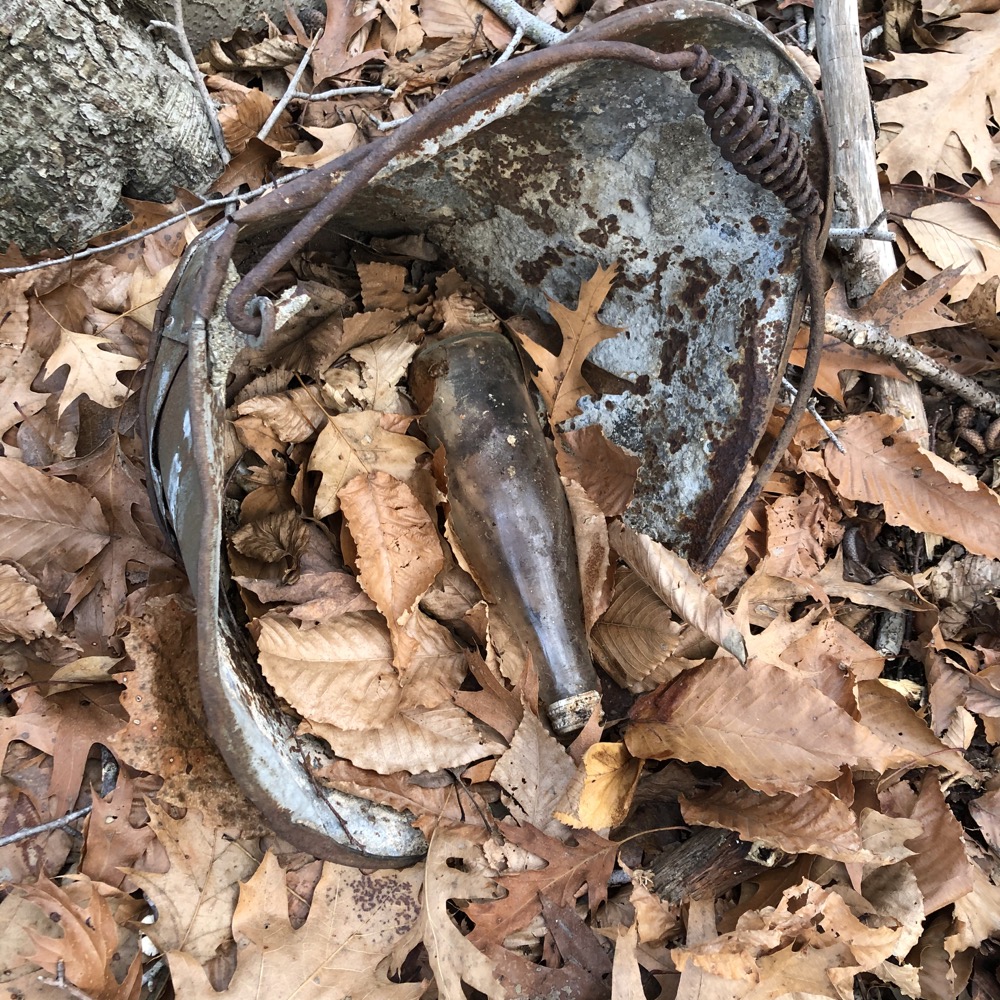
-lous. Oh. An old bottle. Right there along the Bones & Bottles Trail. Huh. I wonder if a trail steward has a collection of old bottles and he or she ventures out to the trail every few months to make sure it still features an old bottle for people like me.
Yeah. As if there are other people like me, writing 1,000 word essays on little Litchfield Hills Audubon Society trails. Sigh. I live a lonely existence sometimes.

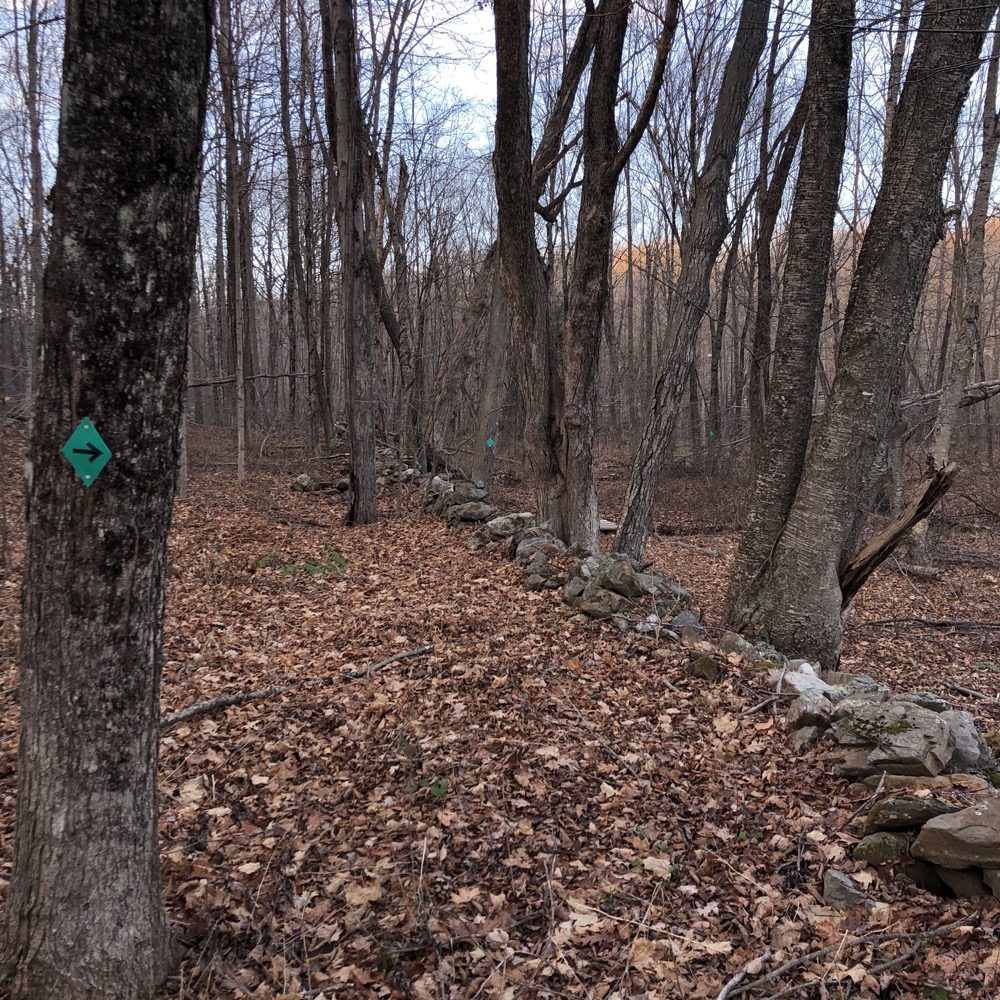
The trail leaves the wide old road and circles back alongside a rocky brook. Wigwam Brook I suppose. Checks map. Yup. Wigwam Brook. There are some interesting rock features here and the trail is sure to pass all of them. It also ventures very near the road for a bit, which isn’t as exciting.
Even though they are both the same property, separated only by a dirt road (yes, Litchfield has more dirt roads than you’d imagine), the Bones & Bottles Trail provides a very different experience from the Conifer Loop Trail. Now that I’m thinking about it, the difference between the two is rather astonishing.
And since I’m still thinking about it, I guess I’m glad that the hypothetical trail steward who places old bottles in the woods isn’t also placing old bones out there as well. After a while, that would get a little sketchy.

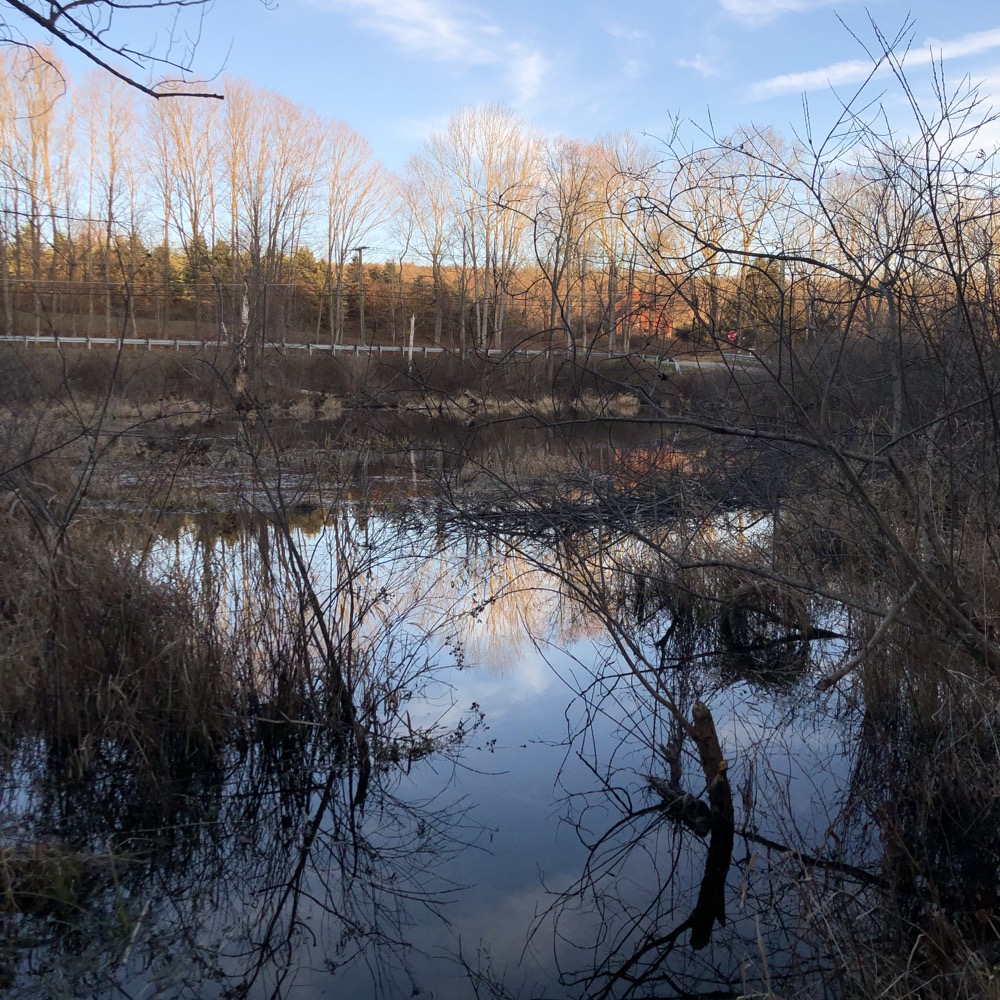
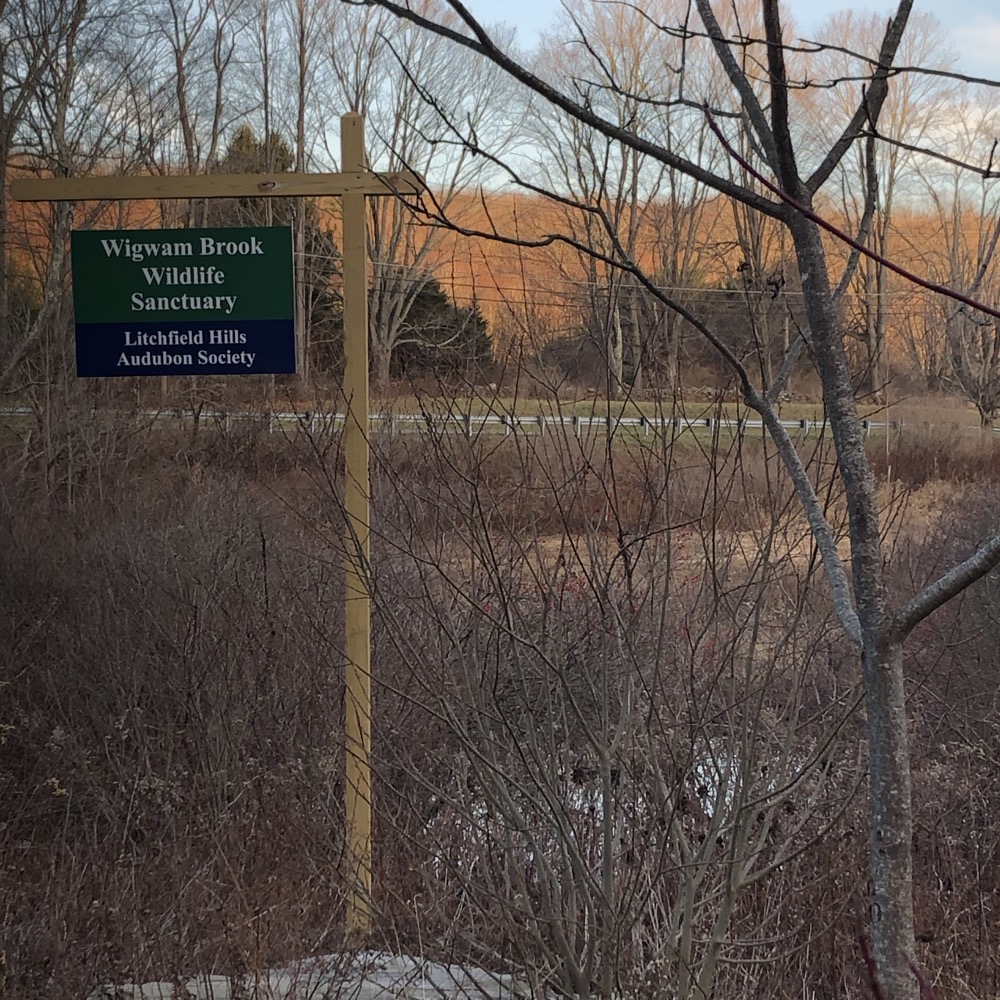
![]()
Litchfield Hills Audubon Society
CTMQ’s Audubon Trails

 Richard says
Richard says
September 2, 2018 at 7:14 amYou should check out the new “Bones & Bottles” Trial directly across the street from the trailhead.